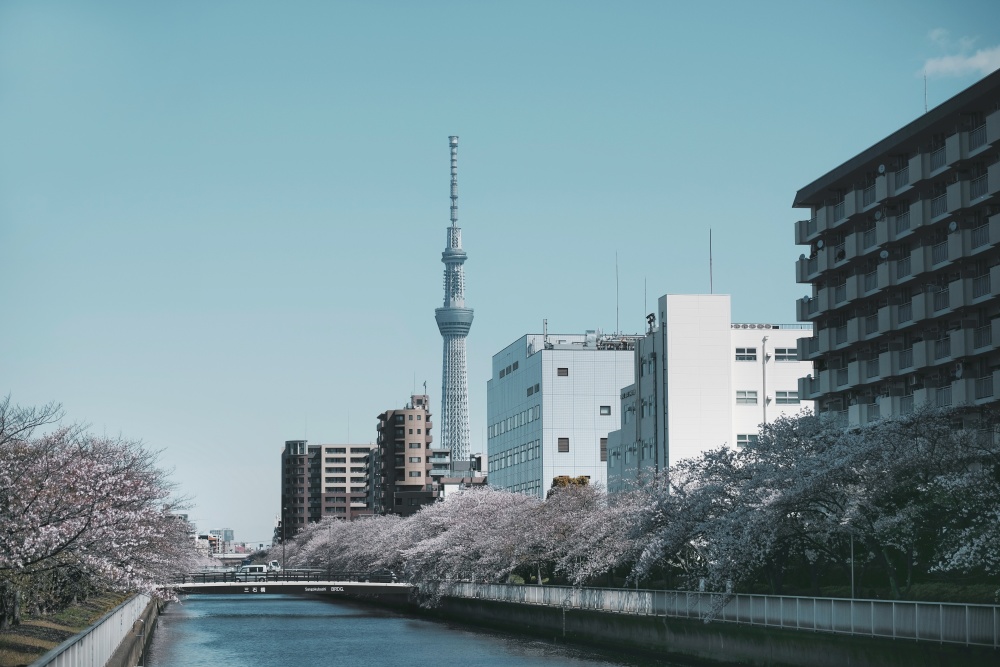Updated February 4, 2023
Japanese Mansions: What are They and Should You Live in One?
What do you picture when you hear the word “mansion”?
If it’s a large, luxurious house with a big garden, chances are you don’t live in Japan. In Japan, the word “mansion” (pronounced “manshon”) means something very different, and far less glamorous.
Today, I’m here to explain what exactly the posh-sounding “mansions” of Japan are and what sets them apart from other types of living arrangements.
What Exactly Is a Mansion?
I’ve already established that a Japanese mansion isn’t a big, fancy house as one might think, but what exactlyis it?
Essentially, a mansion in Japan refers to a large, multi-story building with lots of apartments. It’s basically what you’d call an apartment building, but the word “apartment” (or “apato”) also has a different meaning in Japan.
While there aren’t very clear distinctions between the two, I’ll try to explain both by using the most commonly accepted definitions.
Mansions (Manshon, マ ン シ ョ ン)
Although the word comes from the English word “mansion,” manshons aren’t separate houses with gardens. These tall buildings have multiple stories with several condos or apartments on each floor.
Due to the high build quality, manshons are usually quite safe in case of an earthquake or another natural disaster. Also, most manshons usually include an elevator, though some older ones may not.
Although not as costly as a mansion in the traditional sense, living in a manshon may still be on the more expensive side compared to other housing options in Japan.
A manshon might also include additional facilities in the building as well, such as a small gym, a laundry room, or a common room, but these aren’t necessarily the defining qualities.
They don’t necessarily have to be expensive in a general sense, manshons are the most expensive types of condos you’ll find in Japan.
If you’re curious about the average rent prices of manshons in Tokyo, I also recommend reading my post on average rent in Tokyo, which should give you a good overview. I also explain how to read Japanese manshon/apato listings there since interpreting the abbreviations used can be a real challenge.
Apartments (Apato, ア パ ー ト)
The word “apato” also comes from the English word “apartment,” but an apato usually refers to smaller buildings.
These buildings are usually 2-3 stories high. The tallest ones, although somewhat rare, can be four stories tall as well. As you can imagine, these buildings almost always have no elevators.
Apatos are also made of lesser quality materials compared to manshons. They are less durable and more vulnerable to natural disasters like earthquakes, which are so common that they’re almost a part of daily life in Japan.
Many apatos have outside-facing doors straight to the various rooms, whereas manshons typically have internal hallways leading to each room, inside the structure.
Needless to say, apatos are considered to be cheaper housing options and can be a good choice if you’re living on a budget. If that’s the case, I also recommend checking out my post on the real cost of living in Japan where I detailed all the costs you’ll encounter in the big cities of Japan.
So, What About Stand-Alone Houses? (Ikkodate, 一 戸 建 て)

No matter how tall the building is or how strong the building materials are, if you choose to live in a manshon or an apato, you’ll essentially be living in an apartment unit.
Although one is slightly fancier than the other, both options usually mean that you’ll have to make do with a smaller space. But what if you want a large, separate house?
If that’s the case, what you should be looking for is an ikkodate (一 戸 建 て).
Ikkodates are separate houses, usually with their own gardens. Most of the time, they are the largest housing options you can find in Japan.
Although ikkodates are traditionally made out of wood, nowadays, you can see many concrete ikkodates as well, so the building material isn’t exactly a defining point here.
If you’re looking for a place in the big cities of Japan, ikkodates are the most expensive housing options you’ll come across. However, this isn’t always the case.
For instance, as I explained in my post on the Japanese inaka, there aren’t really any apartments or mansions in the rural parts of Japan. Stand-alone houses are the standard in the inaka, and they can be shockingly cheap.
When I say shockingly cheap, I mean as cheap as 200-300 USD monthly. The ikkodates you’ll find in the countryside will also be much larger compared to the ones that are in the big cities. In general, houses have bigger gardens and larger overall living spaces in the inaka.
All in all, if you enjoy the big-city lifestyle, ikkodates aren’t much of an option at all due to their high cost. There aren’t many of them in the city centers anyway, and most ikkodates in big cities are usually located in the outer districts.
The Difference Between Apartments (Apato) and Mansions (Manshon)

Now that we got the definitions out of the way, let’s dive deeper into the particular differences that set mansions apart from apartments in Japan.
The Build Quality
The difference in build quality is perhaps the most significant distinction between an apartment and a mansion. In fact, this is one of the main reasons taller and sturdier buildings were called mansions in the first place.
Back when the term first originated, only smaller buildings existed in Japan, as they were generally built out of poor-quality materials. When taller concrete buildings started popping up, the housing providers needed a new and better way to describe these buildings.
However, there was a slight problem.
The term “apartment” was already used to describe the smaller, wooden buildings. So, “mansion” — a word that was used in the UK to describe residential buildings that are fancier — was adopted by the Japanese housing market.
This is why the smaller buildings that are made out of wood are called apartments, while mansions are usually made out of concrete and steel.
Owners vs. Tenants
Another difference between apartments and mansions is that the residents of a mansion are more likely to be the owners of their units as opposed to being tenants.
While apartments are in no way undesirable places to live in, they aren’t exactly sound investments, either. This is why in an apato, most of the residents will only be renting their units. Whereas at a mansion, you’ll have more residents that actually own their units.
You might not believe that this is a significant difference, but it might affect you more than you think.
You see, when people actually own a unit, they’re more likely to get involved with the property and the neighbors. In a mansion, where there are a lot of unit owners, you’re more likely to deal with complaints and other unpleasant situations.
Besides, as people tend to be more protective of the place they own, politics come into play. Simple things like regular resident meetings and building management can become more of a hassle than most people are willing to care about.
The Pros and Cons of Living in a Japanese-Style Mansion
Having explained the main characteristics and the differences between mansions and apatos, let’s now sum up all the pros and cons of living in a mansion as opposed to living in an apartment.
Starting off positively, here are the pros of living in a mansion in Japan:
Mansions are sturdier and more durable against earthquakes; wooden apartments are much more susceptible to fires.
Mansions are usually more secure; some can even have a doorman and a security system in place.
You’re less likely to be disturbed by the neighbors in a mansion, as they have better soundproofing.
Mansions usually have elevators.
Looking at the positives, mansions seem to be the way to go if you’re looking for a place to stay, but they aren’t without flaws. Here are some of the most prominent cons of living in a mansion:
Although it’s not always the case, living in a mansion can mean that you’ll have “stricter” neighbors that might just come knocking on your door when the tiniest bit of noise occurs.
Living in a mansion is pricier not only due to higher rent but also because of additional costs like building management fees, security, etc.
While mansions have better thermal insulation, this can cause faster moisture build-up if you don’t have a good ventilation system.
Mansions aren’t exactly the most bang for your buck, as most larger apartments are cheaper.
Final Word: Is It More Common to Live in a Modern Japanese Mansion?

As it may initially seem like mansions are the obvious better choice when hunting for apartments, I’d also like to talk about the popularity of living in a mansion as opposed to other options.
As I explained, while there are certain perks to living in a mansion, there are also some downsides. Besides, if you’ve searched for apartments in a city like Tokyo or Kyoto, you’re probably aware that you won’t even have a choice.
In a market where everyone’s looking for a decent place to stay, you might very well have to settle for a unit in an apato. That being said, you might prefer an apato that’s in a better, quieter location than a mansion on a loud, big street.
So, at the end of the day, it’s really up to preference. There are no “wrong” choices here.
As for houses, or ikkodates, statistics say that over 70% of the population in Tokyo live in apartments/mansions as opposed to stand-alone houses. Therefore, there isn’t much of a choice there.
While this statistic isn’t exactly up-to-date, the housing market in Japan has only gotten worse since then. So, it’s safe to assume that this number has at least stayed the same, if not grown.
To conclude, I recommend basing your decision not only on the housing type, but other factors as well, such as location and accessibility by public transport.
Also, if you’re looking for a place in Tokyo, I recommend checking out the guide I prepared on Tokyo’s neighborhoods which can be a good starting point and give you a general idea.
Get Job Alerts
Sign up for our newsletter to get hand-picked tech jobs in Japan – straight to your inbox.








